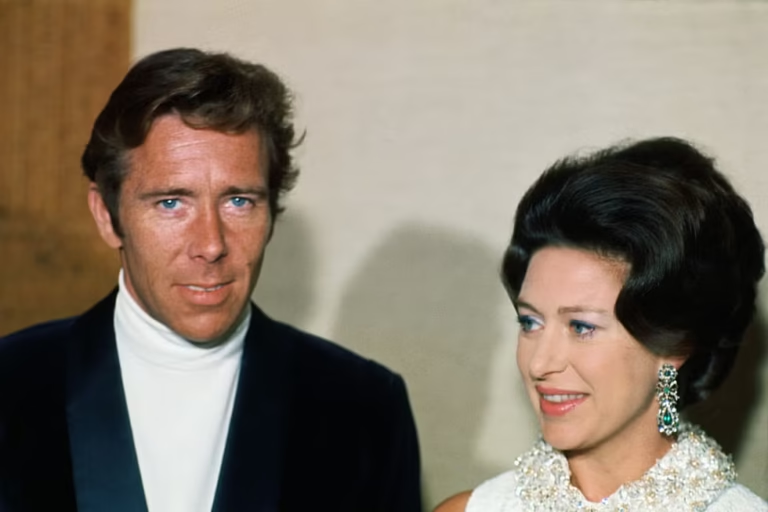Antony Armstrong-Jones, later known as the 1st Earl of Snowdon, was a man of many talents. Best known as a photographer and the husband of Princess Margaret, he lived a life that straddled the worlds of royalty, art, and rebellion. His work redefined portrait photography, capturing some of the most famous personalities of his time. While his marriage to Princess Margaret placed him in the royal spotlight, it was his artistic vision and independent spirit that truly set him apart. This article explores the life, career, and influence of Antony Armstrong-Jones, a man who challenged conventions and left an enduring impact on British culture.
Early Life and Education
Antony Charles Robert Armstrong-Jones was born on March 7, 1930, in London. His family was well-connected but not aristocratic. His father, a barrister, and his mother, a socialite, divorced when he was young. Raised primarily by his mother, he attended Eton College, where he developed an early interest in photography. Despite facing challenges, including contracting polio at the age of 16, Armstrong-Jones remained determined to pursue his passions.
Following his recovery, he attended Cambridge University, where he studied architecture. However, his heart was not in it. Instead, he was drawn to photography, particularly portraiture, which would later become his defining career. After leaving Cambridge without a degree, he began working as a photographer’s assistant, learning the nuances of the craft.
Rise to Prominence as a Photographer
Antony Armstrong-Jones built his reputation as a leading portrait photographer in the 1950s. His distinctive style, characterized by striking compositions and innovative lighting, set him apart from his contemporaries. He captured some of the most notable figures of the 20th century, including actors, politicians, and members of the British royal family.
One of his key early breakthroughs was photographing society events and fashion shoots. His ability to capture subjects in a dynamic, modern way led to assignments from leading magazines, including Vogue and Tatler. His work was in stark contrast to the stiff, formal portraits of the past, making him a favorite among celebrities and high society figures.
Marriage to Princess Margaret and Royal Status
Armstrong-Jones’ relationship with Princess Margaret, the younger sister of Queen Elizabeth II, was a defining chapter in his life. The two met in the late 1950s, and their romance quickly gained public attention. In 1960, they married in a grand royal wedding, the first ever to be televised.
As the husband of a princess, Armstrong-Jones was given the title of Earl of Snowdon. However, despite his new status, he remained somewhat of an outsider in the royal family. His artistic temperament and bohemian lifestyle contrasted sharply with the traditions of the monarchy.
The marriage, while initially filled with glamour and excitement, began to unravel in the 1970s. Both Antony Armstrong-Jones and Princess Margaret had extramarital affairs, and their relationship became strained. In 1978, they officially divorced—the first royal divorce in Britain since King Henry VIII’s era. The split marked the end of a tumultuous yet historic chapter in British royal history.
The Artistic Legacy of Antony Armstrong-Jones

Beyond his royal connections, Antony Armstrong-Jones left an extraordinary artistic legacy. His photography, often described as ahead of its time, helped modernize the way portraits were captured. He had an eye for dramatic contrast and raw emotion, making his images deeply compelling.
One of his most famous works includes portraits of iconic figures such as Princess Diana, David Bowie, Elizabeth Taylor, and Laurence Olivier. His ability to bring out the character and personality of his subjects set him apart from other photographers.
Additionally, Armstrong-Jones played a key role in documentary photography. His work captured the lives of ordinary people, shedding light on social issues in Britain and beyond. He worked with major institutions like The Sunday Times and was instrumental in redefining the role of photography in journalism.
Philanthropy and Architectural Contributions
In addition to his photography, Armstrong-Jones was passionate about design and accessibility. He was a strong advocate for disabled individuals, likely influenced by his own experience with polio. He helped design wheelchair-accessible public spaces and worked with organizations such as the Disability Alliance. His contributions to architecture and mobility improvements for disabled people were widely recognized.
In 1985, he co-founded the Snowdon Award Scheme, which provided financial aid to students with disabilities. His dedication to improving the lives of disabled individuals further cemented his reputation as a compassionate and forward-thinking figure.
Later Years and Legacy
Even after his divorce from Princess Margaret, Antony Armstrong-Jones remained a respected figure in British society. He continued to work as a photographer, producing striking portraits well into his later years. His second marriage, to Lucy Lindsay-Hogg, ended in separation, and he lived much of his later life focused on his artistic and philanthropic pursuits.
Armstrong-Jones passed away on January 13, 2017, at the age of 86. His death marked the end of an era for both British photography and the aristocracy. However, his legacy lives on through his work, which continues to inspire photographers and artists worldwide.
Conclusion
Antony Armstrong-Jones was much more than a royal consort—he was a trailblazer in photography, a champion for the disabled, and a man who lived life on his own terms. His contributions to art and society remain relevant today, as his striking images and advocacy work continue to resonate.
From his unconventional approach to photography to his unique position within the British royal family, Antony Armstrong-Jones was truly a figure who defied expectations. His ability to merge artistry with social consciousness ensured that his impact would be felt for generations to come.
Read more: Liam Payne Funeral: Tributes, Legacy, and Final Goodbye


